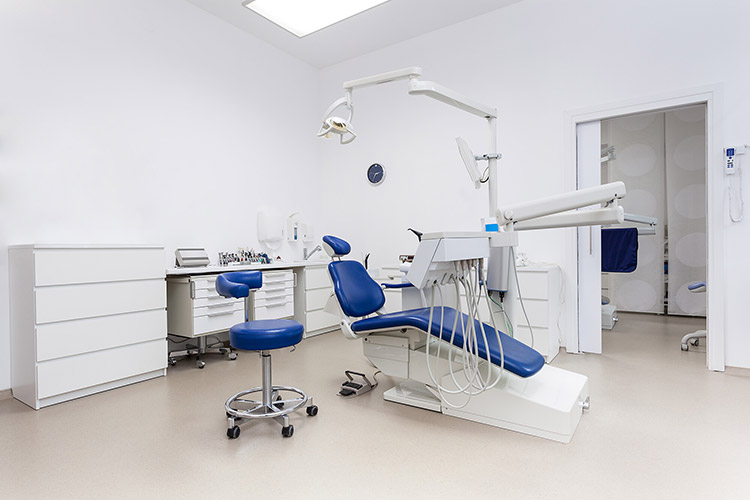Have you ever paused to consider how dental technologies shape your experience at the dentist? In an era where technology touches every aspect of our lives, it’s no surprise that the dental industry is also riding this wave of innovation. The benefits are not just in the space of efficiency and precision. They extend to a more personal level: your comfort, your time, and most importantly, your smile.
From the moment you step into a dental practice, cutting-edge technologies like 3D printers and computer-aided manufacturing are working behind the scenes. They not only enhance dental treatment but also reshape the very nature of dental care. This article peels back the curtain on these technologies to reveal how they contribute to comprehensive treatment plans and ensure high-quality care under the watchful eye of your dental professional.
What Are Some Common Dental Technologies?
Dental technologies have revolutionized the way dental professionals diagnose and treat their patients. These advancements significantly improve the quality of dental care and patient comfort. One of the most notable advancements is the use of digital X-rays. Unlike traditional X-rays, digital versions reduce radiation exposure by up to 90%. They also provide instant images to allow for quicker diagnosis and treatment planning. This technology is particularly beneficial in detecting issues beneath the surface, like impacted teeth or jawbone problems.
Intraoral cameras are another staple in modern dental practices. These small, pen-like devices offer a detailed view of the mouth and project images onto a screen. This not only aids in accurate diagnosis but also allows patients to see what the dentist sees to foster a better understanding of their dental health.
3D printers, once a rarity, are now increasingly common in dental offices. They are used to create precise dental models, custom aligners, and even crowns. This technology streamlines the process of creating dental appliances to ensure a perfect fit for the patient.
Computer aided manufacturing (CAM) and computer-aided design (CAD) work together with 3D printing. These technologies allow for the design and production of dental restorations on-site. The result is a faster turnaround time for treatments like crowns and bridges, often with same-day service.
Another technological advancement is laser dentistry. Used for various procedures, including gum reshaping and cavity treatment, lasers offer a less invasive alternative to traditional surgery. They reduce bleeding, discomfort, and healing time which makes dental visits less daunting.
Finally, tele dentistry has emerged as a valuable tool, especially in the wake of the COVID-19 pandemic. It enables dental professionals to offer consultations and follow-ups remotely, expanding access to dental care.
How Do I Benefit from Dental Technological Advancements?

Dental technological advancements bring a host of benefits to patients. These innovations ensure that your experience at the dentist is not just about maintaining dental health but also about enjoying a comfortable and anxiety-free visit.
Enhanced Accuracy and Comfort
Dental technologies have dramatically improved the accuracy and comfort of dental treatments. Digital X-rays, for example, are not only faster and more efficient than traditional X-rays but also expose patients to significantly less radiation. This technology allows dentists to detect problems early and accurately which leads to better and quicker treatment plans.
Innovations like 3D imaging also provide a comprehensive view of your teeth and jaw. They enable dentists to plan treatments like implants or orthodontics with pinpoint precision.
Personalized and Efficient Treatments
Personalization is at the heart of modern dental care. With technologies such as CAD/CAM, dental practices can now create custom-made restorations like crowns and veneers on-site, often within a single visit. This not only saves time for the patient but also ensures a more precise and comfortable fit.
Minimally Invasive Procedures
The advent of laser dentistry has introduced a less invasive approach to dental procedures. Lasers are used for a variety of treatments, including cavity removal and gum reshaping, often with less pain and quicker healing times. This technology reduces the need for anesthesia and minimizes bleeding. It makes dental visits less intimidating and more comfortable for patients.
Improved Dental Health and Aesthetics
Technological advancements have also enhanced the aesthetics of dental treatment. For instance, clear aligners, made using 3D printers, offer an almost invisible way to straighten teeth. They’re a popular choice for adults seeking orthodontic treatment. These custom-made aligners are not only aesthetically pleasing but also comfortable and effective.
Access to Advanced Care
Tele dentistry has emerged as a crucial technology, particularly in times of social distancing. It allows patients to receive professional dental advice remotely. It ensures continuity of care even when a physical visit is not possible.
This technology has made dental care more accessible, especially for those in remote areas or with mobility issues.
Are Dental Technologies Covered by Insurance?
Navigating the world of dental insurance can sometimes feel complex. Especially when it comes to understanding what is covered and what is not, particularly regarding dental technologies. Let’s break down the basics of insurance coverage for these advanced tools and procedures.
Understanding Insurance Coverage
Most dental insurance policies cover routine procedures such as cleanings, fillings, and basic X-rays. However, when it comes to more advanced technologies like 3D imaging or CAD/CAM for crowns and bridges, coverage can vary. Some insurance plans may consider these as elective or cosmetic procedures and might not provide coverage.
Coverage for Preventative and Diagnostic Technology
Preventive care, such as digital X-rays used for routine check-ups, is typically covered by dental insurance. These technologies are vital for the early detection of dental issues and are often included in standard dental care plans. Diagnostic procedures usually receive some level of coverage.
Elective Procedures and Advanced Technologies
Advanced dental technologies may not be covered by insurance. Particularly those used for cosmetic procedures like laser teeth whitening or certain types of orthodontic work. These are often seen as elective treatments. Insurance companies usually provide coverage for procedures deemed medically necessary, while elective treatments often require out-of-pocket payment.
The Grey Area in Insurance Coverage
There’s often a grey area in insurance coverage for emerging dental technologies. For instance, teledentistry may not be universally covered by all insurance plans. The coverage for such services is evolving as the technology becomes more widespread.
Tips for Navigating Insurance for Dental Technologies
It’s always a good idea to discuss with your dental professional about the technologies they use and the associated costs. They can guide what your insurance may or may not cover. Additionally, discussing payment plans or alternative financing options with your dental practice can also be helpful. Especially for procedures not covered by insurance.
What Types of Technologies Do All Dentists Use?
In every dental practice, certain technologies are fundamental to providing effective dental care. Digital X-rays are a common tool used by virtually all dentists. They are crucial for diagnosing and monitoring dental health and offer clearer images with less radiation exposure compared to traditional X-rays.
Intraoral cameras are another technology widely used in dental practices. These small, handheld devices allow dentists to get a detailed view of the inside of a patient’s mouth. The images captured by these cameras can be displayed on a screen, making it easier for patients to understand their dental health.
Sterilization equipment is also a standard in every dental office. They ensure that all tools and equipment are clean and safe for use. This is crucial for preventing the spread of infections and maintaining a hygienic environment. For general dental care, technologies like ultrasonic cleaners are used to efficiently remove plaque and tartar from teeth. These devices use high-frequency sound waves to clean teeth more thoroughly and comfortably than traditional scraping tools.
Electric handpieces are another common technology. They are used for drilling and other procedures. These tools offer more precision and speed compared to older, air-driven models.
What Technologies Are Only Used by Specialists?
When it comes to specialized dentistry, some technologies are specifically tailored for complex procedures. For example, Cone Beam Computed Tomography (CBCT) scanners are often used by oral surgeons and orthodontists. These scanners provide 3D images of the teeth, soft tissues, nerve pathways, and bone in a single scan. They offer invaluable information for complex procedures like dental implants or orthodontic treatment.
Laser dentistry is another technology more commonly used by specialists. Dental lasers can be used for a range of procedures, from gum surgery to whitening treatments. They offer precision and reduced discomfort which often minimizes the need for anesthesia and speeds up recovery times.
CAD/CAM technology is also integral in specialist practices for designing and creating complex dental restorations. This technology allows for the creation of precise and customized dental prosthetics.
Orthodontic technologies like clear aligners are primarily used by orthodontists. These aligners are custom-made for each patient to provide a less visible alternative to traditional braces for straightening teeth.
Learn More About Tomorrow’s Dental Care
In our family and cosmetic dentistry practice, we understand that your smile is key to your confidence. By integrating the latest dental technologies, we not only promise top-notch dental care but also a personalized experience that aligns with your unique needs. Our commitment to high-quality, technology-driven dental services is what sets us apart.
Ready to experience the future of dental care? Contact us today and let Dr. Mendrinos and Dr. Bredologos craft the perfect smile for you.
